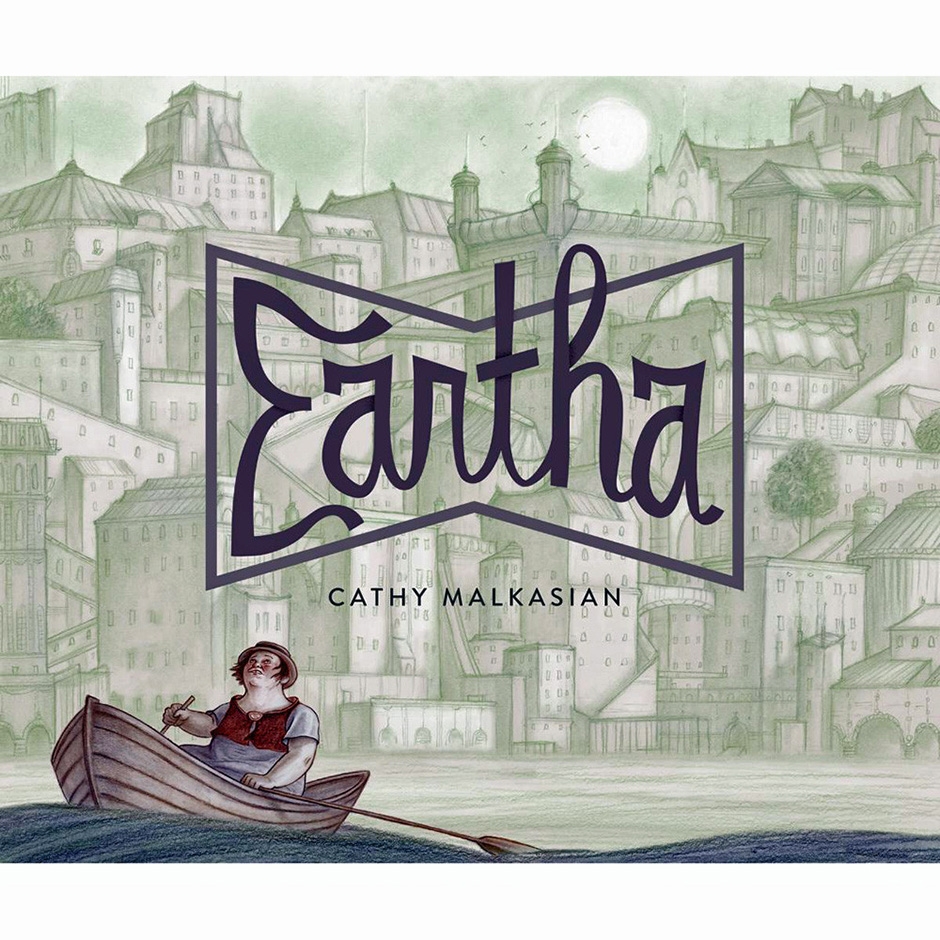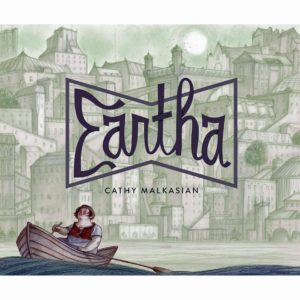

Cathy Malkasian is also a director of children’s animation and has credits on “Rugrats,” “The Wild Thornberrys” movie and “Curious George.”
Nicole Prieto | Staff Writer
Through masterful pencil lines and emotive scenery, Cathy Malkasian’s “Eartha” tackles difficult subjects about society and politics through a strange world where dreams take corporeal form. “Eartha” is Malkasian’s fourth graphic novel and follows the misadventures of the book’s namesake as she works to solve a bizarre mystery. Echo Fjord is a pastoral farming area cut off from the world’s problems. As its kindest resident, Eartha uses her large size and great strength to help its many denizens with their troubles or chores.
Aside from their peaceful life of growing and producing, one of the Fjord folk’s most important tasks is to shepherd City people’s dreams. Dreams have always emerged upon Fjord shores and fields to play out their distant owners’ fantasies. For 1,000 years, the Fjord folk have been more than happy to guide them to completion, even long after the City’s location became lost to time. Trouble arrives, however, when the dreams suddenly stop coming — but then return with an array of ominous visions. Something is wrong, and Eartha is unwittingly tasked to find the City and discover the source of its problems.
As in her 2010 graphic novel “Temperance,” Malkasian’s soaring cityscapes, maze-like arcades and horizonless fields display her remarkable, genre-defying imagination. The book is drenched in soft violets and sepia tones that invite warmth and create beautiful contrasts. Readers will find themselves caught up in fantastic illustrations that perhaps evoke the kind of “backwards nostalgia” that some characters in “Eartha” are afflicted by.
As a story, the book is layered with symbols and messages that make simple interpretations as unrealistic as the book’s abstract universe. On one hand, Malkasian contrasts busy city life with rural steadfastness. But on the other, she refuses to state that Fjord folk are superior to City people. The Fjord folk fully embrace the wild dreams from their distant counterparts, commenting on their virtues and beauty, no matter how simple or sordid they may be.
This is an interesting narrative move that subtly encourages readers to forgo stereotypes about different ways of life. Though City life at first appears cruel to Eartha, she meets with different people who display the same caring attitudes and rich personal histories as the Fjord folk.
Malkasian also fits in unsubtle criticism of social media and performative grief, doing so almost entirely without invoking them by name. For example, Eartha finds herself in an alien world that might be uncomfortably familiar to readers. She learns that an army of plaid-wearing gangsters is exploiting the City people into trading valuables for boxes of biscuits printed with dubious headlines. The City people, obsessed with “Biscuit News,” become paralyzed with terror and addicted to comfort-eating the very pastries causing their distress.
While perhaps ribbing on attention-grabbing headlines and fake news, Malkasian avoids descending into uncritical generalizations about the news industry. Instead, she warns against the desire to appear worldly through exaggerated displays of grief. Through her character Eartha, she emphasizes how action and compassion are far more productive ways to handle problems, and as in “Temperance,” love and the desire to connect ultimately win the day.
As a storyteller, Malkasian is unafraid of difficult subjects and fully embraces the complexity of human nature. Eartha is a likeable and caring heroine, but she is not a faultless archetype. When Eartha is at her worst, Malkasian lets her say or do things she would otherwise regret, such as threatening harm to another. Malkasian understands that people are complicated, and even the most well-meaning and loving among us have moments of abject selfishness or cruelty.
Still, even though Malkasian’s abilities as an artist are on full display, the style of her narrative is somewhat less impressive. Compared to “Temperance” — which made effective use of subtle foreshadowing in its first pages — “Eartha” tends to introduce significant plot points or characters only when they become significant to the story. This is arguably a deliberate move by Malkasian; it does makes the reading experience more fluid and dreamlike, though it comes at the cost of a more cohesive plot.
At 255 pages and packed with dense subjects, “Eartha” is not something to be tackled in under an hour. It is a remarkable new release with relevant messages for a modern audience. Take some time to sit back and enjoy it — and do not feel too bad if a lot of it goes over your head the first time around.




